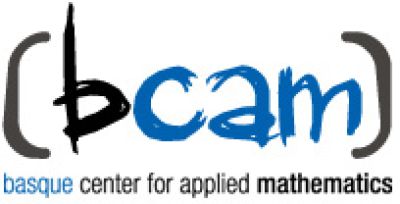
Workshop “COVID-19 in Euskadi and Catalunya: dealing with a pandemic from a biostatistical perspective”
El grupo Kronikgune – OSI Bilbao Basurto de la RICAPPS participaron en dicho Workshop con la impartición de un curso sobre los modelos multi-estado, además de una ponencia sobre la incidencia de la COVID-19 tras la vacunación en pacientes residenciados.
Información del curso impartido: “Basic concepts of multistate models and their implementation in a user-friendly web tool: MSMpred”
Docentes: Leire Garmendia (RICAPPS, Kronikgune) y Klaus Langohr (Universidad Politecnica de Cataluña)
Multistate models are useful tools to model the course of diseases that go through different stages. For example, these models can be employed to estimate the probabilities of transitions among the disease stages or to identify prognostic factors for these transitions. This is of great clinical relevance in the case of diseases with increasing degrees of severity that may precede death such as COVID-19.
This course will present basic concepts of multistate methods in three parts: first, the purpose and characteristic features of multistate models will be introduced; second, the nonparametric estimation of transition probabilities will be explained; and third, semiparametric models that can be used to model the transitions of interest will be presented. Each of these parts will consist of both an introduction of theoretical concepts and an illustration by means of the web tool MSMpred (https://www.grbio.eu/pubs/MSMpred/).
This user-friendly web application has been developed with the intention to ease the work of biostatisticians and help medical personnel with the interpretation of multistate models without the need of programming knowledge. Moreover, it allows to make predictions of the disease course of future patients.
Learning objectives: By the end of the course, the participants will be familiar with the purpose, features, and basic statistical methods of multistate models. In addition, they will be able to correctly interpret the results of multistate models and will have learned to use the web tool MSMpred.
Información de la comunicación oral: “Incidence of COVID in nursing homes after vaccination”
Autores: Idoia Castillo-Sintes, Amaia Bilbao-Gonzalez, et al.
OBJECTIVE: Primary objective: to determine associations of COVID-19 vaccination status (unvaccinated, one dose, two doses or three doses) with SARS-CoV-2 infection among nursing home residents. Secondary objective: to compare the natural protection of a previous SARS-CoV-2 infection against a new infection in each vaccination status among nursing home residents.
METHODS: Retrospective cohort study of patients over 60 years and alive on 27 December 2020, living in nursing homes in the Basque Country, when the vaccination program began. We collected sociodemographic, baseline comorbidities and medical treatment data. The main outcome was SARS-CoV-2 infection after each vaccination dose. Participants were followed until death or 31 January 2022. We calculated the rate of infection per 10,000 person days for each vaccination status. For the primary objective, random effects time varying Cox models were fitted to estimate hazard ratios (HR) and 95% confidence intervals (CI) according to the vaccination status. All Cox models considered the index date (the month/year in which an individual change the vaccination status) as a random effect and were adjusted for age, sex and comorbidities. For the secondary objective, the Cox models were used to estimate HRs for the infection according to previous SARS-CoV-2 infection in each vaccination status.
RESULTS: 17,477 nursing home residents were considered. Primary objective: the SARS-CoV-2 infection rate after each vaccination status was, 11.75 per 10,000 person day for the unvaccinated and it goes down once they receive one vaccination dose (rate, 10.87) and even more with the second dose (rate, 2.19). However, it goes up again with the third dose (rate, 17.73) coinciding with the omicron variant. The adjusted HR for SARS-CoV-2 infection of the one-dose state compared to the unvaccinated state was 0.73 (95% CI, 0.23-2.36) and not significant (p=0.600). However, the adjusted HR of the two-doses state compared to the one-dose was 0.23 (95% CI, 0.17-0.30) and significant (p<0.0001). The adjusted HR of the three-doses state compared to the two-doses was 19.85 (95% CI, 5.58-70.59) and statistically significant (p<0.0001). Secondary objective: in all vaccination status, the infection rates were much lower in residents who had previously suffered from SARS-CoV-2 infection compared with those without (p<0.0001). The adjusted HR (95% CI) was 0.20 (0.15-0.27) among unvaccinated residents, 0.06 (0.02-0.17) among patients with one dose, 0.27 (0.22-0.34) among patients with two doses and 0.46 (0.42 to 0.50) among patients with three doses.
CONCLUSIONS: First vaccine dose showed no significant influence in subsequent SARS-CoV-2 infection, the second dose was associated with 70-83% of reduction in SARS-CoV-2 infection with respect to the first-dose state, and the third dose was associated with an increase in SARS-CoV-2 infection cases due to the omicron variant. Further, previous SARS-CoV-2 infection imply a reduction in infection for all states of vaccination, showing its clear natural protection.